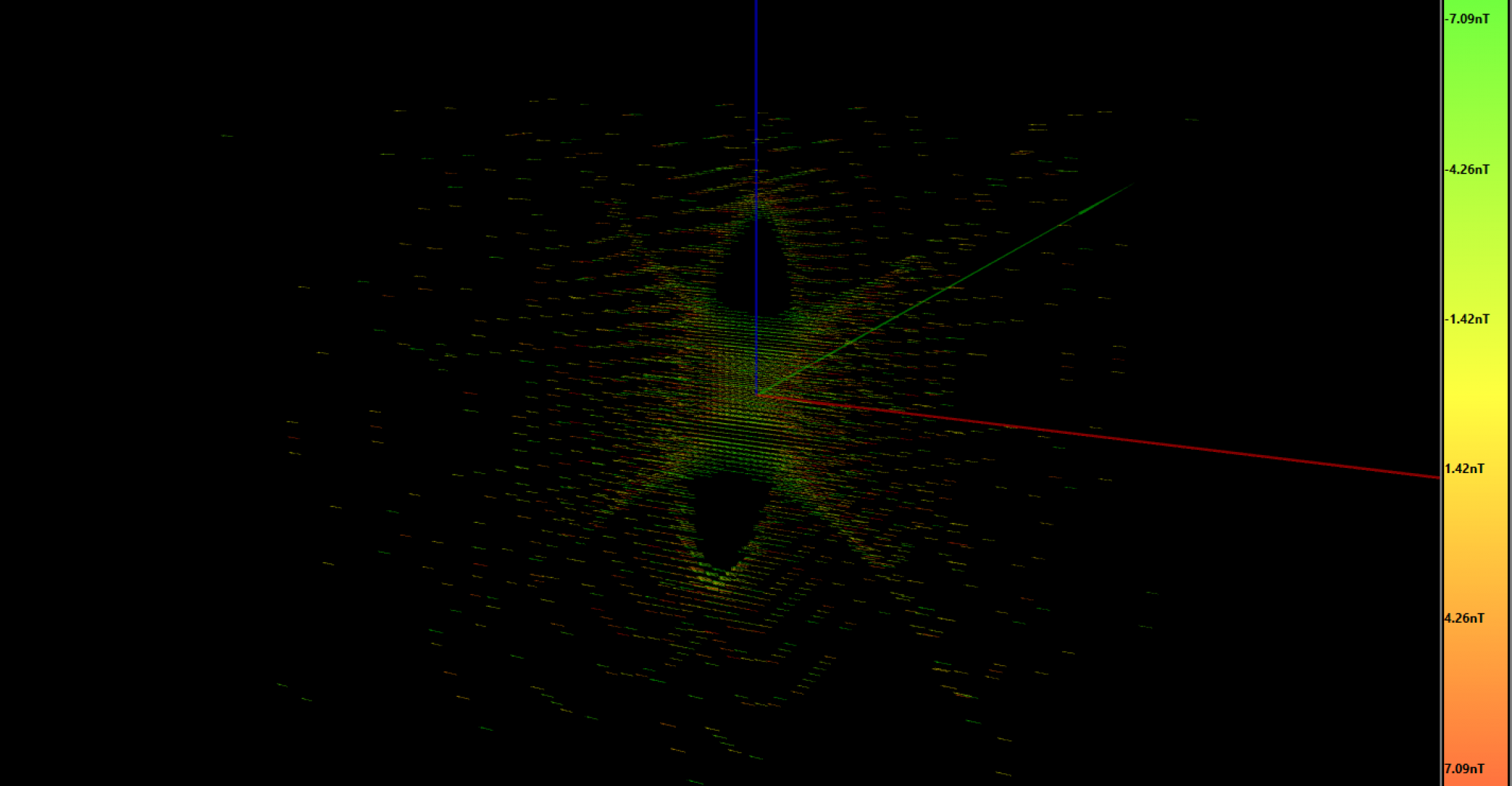
Main Features and capabilities. Full 3D electromagnetic field simulation: EMS enables you to do both electric and magnetic simulations using your complete 3D geometry to ensure 100% accuracy and integrity of your designs. EMS also allows you to do both 2D planar and axis-symmetry simulations for designs where such simplification yields. This java applet is a magnetostatics demonstration which displays the magnetic field in a number of situations. You can select from a number of fields and see how particles move in the field if it is treated as either a velocity field (where the particles move along the field lines) or an actual force field (where the particles move as if they were little magnets).
The MLX90395 is a 3D magnetometer capable of measuring X, Y, and Z magnetic fields and is an expansion of the set of Melexis sensors offering this output. Unlike many other magnetometers, the MLX90395 is designed to sense magnetic fields produced by a permanent magnet versus earths magnetic field. Therefore, the MLX90395 is well suited to sense the position of a static or moving magnet in the vicinity of the sensor by measuring the magnetic fields produced by it.
Compared to the previously released, consumer-product-focused MLX90393, the MLX90395 shares many features but also differs in many ways.

Wider temperature range
The MLX90395 operates over a wider temperature range than the MLX90393, from -40 degC to 125 degC ambient, making the MLX90395 suitable for in-cabin, on-body, or light powertrain applications in automotive. It is also suitable for many industrial applications like factory automation, robotics, or material handling.
Higher speed operation
The speed has been increased, up to a 2kHz peak sampling rate, when measuring all three magnetic field axes.
Supply voltage measurement
The MLX90395 can also measure its own supply voltage to enable a plausibility check to be conducted with the ADC in the host microcontroller. The supply voltage measurement also enables monitoring of battery discharge in battery powered applications.
3d Magnetic Field Simulation Matlab

Magnetic Field Simulation Software
Two ranges of field
The MLX90395 provides two magnetic field versions; a medium field and a high field version. The medium field version enables 50mT maximum magnetic field in the X and Y axes and 130mT in the Z axis. The high field variant extends the magnetic field range to 120mT in the X and Y axes with the same 130mT maximum field in the Z axis.The high field version is particularly suited for applications where stray magnetic fields, produced by another magnet or by a current carrying conductor, may be present. By increasing the desired signal from the permanent magnet the error due to the infringing field will be reduced.For both versions, exceeding the maximum field range will not damage the sensor. Returning within the operating conditions will return the sensor to normal operation.
Automotive qualification and multi-packages
Finally, the MLX90395 is automotive qualified to the AEC Q100 standard and is available in a RoHS compliant 3x3mm QFN16, SOIC8, or TSSOP16 package. The QFN16 and SOIC8 packages contain a single silicon die while the TSSOP16 contains two fully independent dies for applications requiring redundancy for safety or availability reasons.
Protocol
The MLX90395's output is selectable between SPI or I2C allowing flexibility in integration. The SPI protocol operates at a clock speed up to 10 megahertz while the I2C protocol supports I2C standard mode with clock rates up to 100 kilohertz or I2C fast mode with clock rates up to 1 megahertz. Trigger and interrupt pins are provided for starting measurements at defined times and flagging when data is ready. Triggering via command and polling are also supported for pin-count constrained applications.
Flexibility
The MLX90395 is highly configurable. For example, the axes to be converted can be chosen from any combination of X, Y, and Z. For example, in many rotary motion applications only X and Y magnetic fields need to be sensed. The Z axis can therefore be skipped saving current and time. The supply voltage and temperature measurements are similarly selectable.
Today I’ve just been playing with my software to render this 3D animation of the magnetic field generated by a Helmholtz coil. The objective was to observe how the magnetic homogeneity varies with respect to the distance between coils.
As you can see, we find the maximum homogeneity when the distance between coils equals the radius (70mm). The total central magnetic field is also decreasing as the coils spread apart. In each of the 300 simulations to generate this animation, the central magnetic field is calculated and plotted to the left graph, and then only the 3D vectors fitting the 100ppm volume are shown. The homogeneity is also plotted below the central magnetic field graph, and the maximum variability shown in the right color scale in nT.
Free Magnetic Simulator
Enjoy!